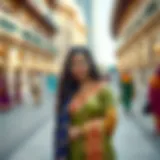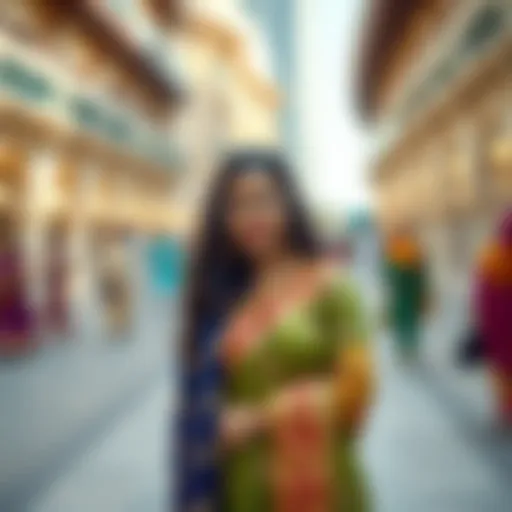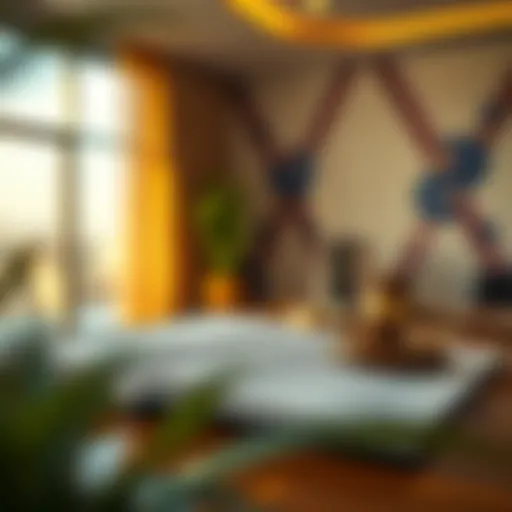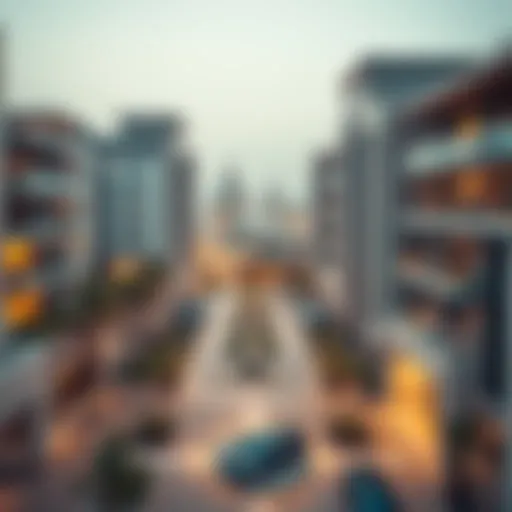Exploring Dubai's Stunning Mosques and Their Significance
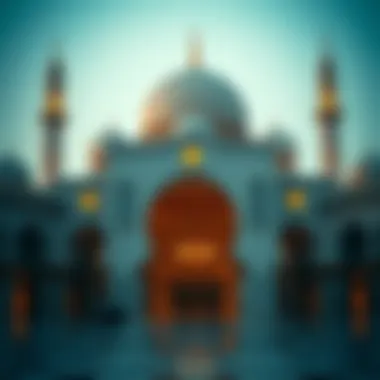

Market Insights
When discussing the landscape of Dubai's real estate, one can’t ignore the towering presence of its mosques. These architectural wonders not only serve as centers of worship but also influence the local real estate market in subtle ways. Wealthy investors and expatriates often find the neighborhoods surrounding these mosques highly desirable. Consequently, properties near iconic structures like the Sheikh Zayed Mosque or the Al Farooq Omar Bin Al Khattab Mosque often appreciate in value over time.
Current Trends in Dubai Real Estate
In recent years, Dubai's real estate market has undergone several transformations. A key trend has been the growing interest in properties that embody both luxury and cultural heritage. Buyers are leaning towards areas where modern amenities meet traditional architectural styles. Mosques serve as crucial landmarks that increase the aesthetic appeal of neighborhoods, thus attracting potential homeowners.
As expatriates flood into Dubai, looking for community and connection, the mosques act as beacons, pulling buyers to properties that lie within their proximity. Buyers are gravitating toward homes that not only offer stunning views but also easy access to cultural and spiritual hubs. Additionally, developments that incorporate Islamic design elements are increasingly popular among investors who want to resonate with the local culture. This unique mix is reshaping the real estate scene.
Price Fluctuations and Forecasts
The real estate market in Dubai is quite dynamic, marked by periods of heightened development and subsequent slowdowns. Prices in certain districts have seen impressive growth, especially those bordering significant cultural sites. For example, properties in close vicinity to the Grand Mosque have experienced substantial price increases, attributed to their appeal as cultural landmarks.
Market forecasts suggest a continued rise in demand for properties around mosques, especially as Dubai hosts cultural festivals and events that draw tourists and locals alike. Overall, the mosques not only stand as stunning designs but also significantly shape the trajectory of property values in their areas.
Cultural Relevance of Mosques
Mosques in Dubai do not merely serve as places of worship; they represent community. They act as spaces where people gather, forming bonds that go beyond families. Understanding their cultural significance can provide deeper insights into the local real estate market and why properties nearby are sought after.
Beyond religious functions, these structures often host events and activities that cater to families and individuals, making neighborhoods around them vibrant. For investors, this social aspect is vital. A bustling community atmosphere can greatly enhance property appeal and resale value, as homebuyers typically desire neighborhoods with community engagement.
"A mosque is not just a place for prayer; it is the heart of the community, a cultural hub that fosters connection among its people."
Finale
In summation, the mosques of Dubai are far more than just religious structures. They are pivotal points that affect property values and real estate trends in the city. For anyone considering investment in Dubai's real estate, an understanding of these architectural marvels and their cultural significance is crucial. By appreciating the role these mosques play in both community life and the market, prospective buyers and investors can make informed decisions while also honoring the rich heritage of the region.
Preamble to the Mosques of Dubai
Mosques in Dubai do more than just provide a place of worship; they encapsulate the intersection of faith, artistry, and culture within the rapidly evolving urban landscape. As the city has flourished, so has the architectural language influencing the construction of these sacred spaces. Through this article, we dive into the aesthetic and cultural significance of these mosques, revealing why they are essential to not only religious life but also communal identity and architectural heritage.
Overview of Dubai's Cultural Landscape
Dubai, a melting pot of cultures, showcases a unique blend of traditional values meeting modernity. The public's daily life is interwoven with the customs of over 200 nationalities, resulting in a vibrant tapestry of events, cuisine, and, importantly, religious practices. Within this diverse framework, mosques serve as more than just monuments; they act as community hubs, bridging the gaps among various cultural groups while promoting mutual respect and understanding.
In Dubai, one can encounter a striking contrast between the sky-high skyscrapers and the intricate designs of mosques, such as the famous Sheikh Zayed Grand Mosque. This contrast emphasizes the city's dual identity—where ancient traditions exist alongside groundbreaking innovation. Furthermore, the skyline tells a story of its own, featuring arches and domes intertwined with modern architectural styles, reflecting the dynamic growth of the region.
Importance of Mosques in Islamic Culture
Mosques are the heart of Islamic culture, where practices extend beyond prayer—serving as centers for learning, community gatherings, and cultural exchange. In Islam, the mosque is considered a sanctuary, a place where followers gather for collective worship and spiritual reflection. This sense of community is paramount; through communal prayers and festivals, bonds are forged, thus helping maintain cohesion in increasingly diverse societies.
Moreover, mosques symbolize the principles of Islam, including charity, peace, and hospitality. Each mosque, from the grandiose to the modest, carries cultural stories, philosophical teachings, and local histories that resonate with the community it serves. They also often become focal points for social initiatives, education programs, and charity drives aimed at uplifting the impoverished and fostering goodwill among residents.
"Mosques in Dubai serve both spiritual and social purposes, nurturing a sense of belonging that transcends mere architectural beauty."
Noteworthy Mosques in Dubai
Dubai is known for its stunning skyline and architectural feats, yet nestled within its urban sprawl are remarkable mosques that contribute significantly to the city's cultural tapestry. These mosques are not only places of worship but also iconic landmarks that showcase intricate design, diverse styles, and community roles. They stand as testament to a culture steeped in history, hospitality, and spirituality. By highlighting these noteworthy mosques, we peek into Dubai’s rich narrative, revealing how these structures foster connections among people of all backgrounds.
Sheikh Zayed Grand Mosque
Architectural Features
The Sheikh Zayed Grand Mosque is one of the most recognizable symbols of Dubai's architectural grandeur. It boasts 82 domes and over 1,000 columns, all adorned with detailed carvings and gold leaf. This mosque is particularly celebrated for its reflective pools that amplify the beauty of the structure, providing a serene atmosphere for worshippers. The choice of white marble, which is not only aesthetically striking but also serves to withstand high temperatures, underscores its architectural ingenuity.
The mosque's unique feature is its immense prayer hall, which can hold up to 40,000 worshippers. This grand space allows for communal gatherings, especially during significant holy days. The sheer scale of such architectural elements elevates its status, making it a key focus of the article where we explore the marriage of traditional techniques with modern materials.
Symbolism and Design
The mosque’s design is infused with symbolism. The architecture embodies principles of unity, peace, and cultural respect, echoing the vision of Sheikh Zayed bin Sultan Al Nahyan. The intricate floral motifs represent the interconnectedness of life, resonating throughout Islamic art.
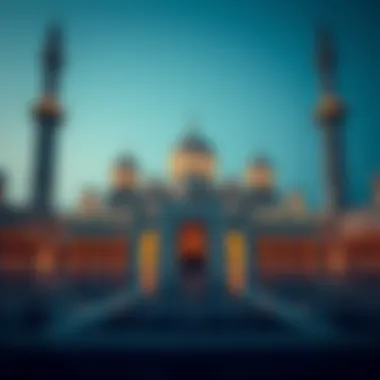

One prominent characteristic is the use of light in its design. During different times of the day, the mosque reflects varied hues, symbolizing the transition of time and continuity of faith. Its design choices resonate deeply with the spiritual community and illustrate how architecture can convey powerful messages about the nature of existence.
Visitor Experience
As for the visitor experience, the Sheikh Zayed Grand Mosque is open to non-Muslim guests, permitting them to explore its architectural splendor. Guided tours delve into its history and spiritual significance, enhancing the understanding of Islamic culture.
A unique aspect of this experience is the availability of audio guides in multiple languages, making it accessible to a broader audience. However, managing large tourist numbers presents challenges, often leading to crowdedness at peak times. Yet, those who visit often walk away with a newfound respect for Islamic architecture and culture, marking it as an essential inclusion in this narrative.
Jumeirah Mosque
Architectural Style
The Jumeirah Mosque, designed in the traditional Fatimid style, illustrates how cultural heritage is preserved amid modern influences. Its twin minarets and grand dome are crafted with exquisite detail, blending seamlessly into the landscape of Dubai.
The highlight of its architectural style is its two towering minarets, which not only signify the mosque’s presence but also serve as points of orientation in the bustling Jumeirah district. This mosque’s style showcases how traditional Islamic architecture adapts to contemporary contexts, allowing it to resonate within its environment.
Community Engagement
Notably, Jumeirah Mosque emphasizes community engagement. It actively participates in interfaith dialogues, hosting programs that invite people from various backgrounds to learn about Islam and its practices. This initiative positions the mosque as a cultural bridge, fostering understanding and respect.
Engaging the community through open houses allows for enriching discussions, making it popular among locals and tourists alike. Such efforts exemplify the mosque's role beyond being a mere place of worship, which emphasizes its importance in our exploration of Dubai's cultural landscape.
Tourist Accessibility
Accessibility to the Jumeirah Mosque is another key point. Located near the beach and accessible by public transport, it attracts a good number of tourists. Guided tours cater to non-Muslim visitors, illustrating how the mosque integrates into the fabric of Dubai’s tourism industry.
However, while these tours enrich visitor experience, they also create a juxtaposition between sacredness and profitability that merits further examination in the broader context of tourism and religious sites.
Al Farooq Omar Bin Al Khattab Mosque
Design Inspirations
The design of Al Farooq Mosque is heavily inspired by the Blue Mosque in Istanbul, with borrowing elements that reflect Ottoman architecture. Its striking domes and calligraphic art draw the eye, centering on a deep appreciation for historical aesthetics in contemporary Islamic art.
One key characteristic is the visible integration of water features within its grounds. These elements not only enhance tranquility but also echo the essentiality of water in life, adding depth to its design. This design inspiration creates resonance within our article as it showcases how historical references can shape modern faith spaces.
Role in Local Community
This mosque plays a vital role in the local community by facilitating various outreach programs. It offers a safe space for discussions about spirituality, law, and ethics, creating a forum for constructive dialogue.
The unique aspect of its community role is its multilingual educational sessions, which welcome participants from various backgrounds. This inclusion enhances its appeal and indicates a forward-thinking approach to religious engagement, making it a significant point of discussion in understanding Dubai's collaborative spirit.
Educational Programs
Al Farooq Mosque hosts numerous educational programs, teaching Arabic, Islamic studies, and more. These programs serve not only the local community but also expatriates seeking to integrate into Emirati culture.
The unique feature is its family-oriented programs, which invite participation from all ages, ensuring that knowledge is passed through generations, thus maintaining cultural continuity. This focus on education speaks volumes about the mosque's mission and is crucial to exploring its impact on Dubai’s social fabric.
Dubai Marina Mosque
Modern Architectural Elements
The Dubai Marina Mosque represents a blend of modern architecture and traditional Islamic aesthetics. Its sleek lines and cutting-edge building materials juxtapose the more intricate designs of older mosques, showcasing an evolution in architectural thought.
Key characteristics include the use of glass and steel, which allow for ample natural light while maintaining structural integrity. This mosque exemplifies how modern architectural elements can coexist with spiritual purpose, making it a noteworthy inclusion in our discussion of architectural evolution.
Cultural Significance
Beyond its architectural flair, the Dubai Marina Mosque brings significant cultural value to its surroundings. It serves as a gathering place for diverse communities, fostering inclusivity in one of the city’s most cosmopolitan areas.
This mosque is a cultural landmark that contributes to the vibrant lifestyle of the Marina. By integrating with leisure and tourism centers, it enriches the cultural aura of the neighborhood, marking it as a focal point in our exploration of Dubai's unique heritage.
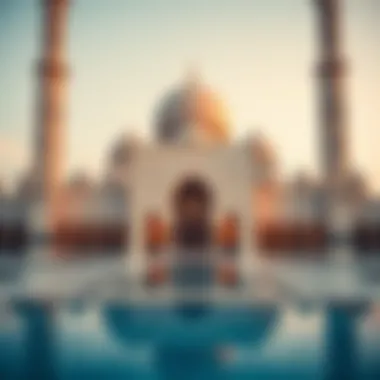

Integration with Local Community
The mosque’s integration with the local community is reflected in its outreach initiatives, such as charity events and health programs. These initiatives engage both worshippers and non-worshippers, blurring lines between religious duty and community service.
The unique feature of this mosque is its ability to host events that encourage participation from all walks of life, enhancing the social fabric of the Dubai Marina area. This character invites an exploration of how mosques can be not just places of worship, but community hubs that resonate with a broader audience.
Architectural Styles of Dubai Mosques
The architectural styles of mosques in Dubai are more than just visual delights; they carry with them a narrative of cultural fusion and artistic expression. This section explores how various styles, ranging from traditional Islamic to modern interpretations, blend history with innovation. By understanding these architectural nuances, one can better appreciate the mosques' roles, not only as places of worship but as significant cultural landmarks.
Traditional Islamic Architecture
Historical Context
Traditional Islamic architecture in Dubai reflects a rich tapestry woven from centuries of history. The art and architecture are closely tied to the propagation of Islam, often serving both spiritual and communal purposes. The historical roots can be traced back to the Arabian Peninsula, where early structures were primarily functional, designed to accommodate the needs of a growing community. The beauty of these mosques lies in their simplicity and the deep respect for Islamic tradition they embody.
One distinct aspect of historical context is the adaptation of local materials and resources, leading to structures that resonate with the surrounding environment. This context makes traditional styles beneficial in fostering a sense of belonging and cultural identity in the community. A notable feature is the use of intricate geometric patterns and calligraphy that not only serve decorative purposes, but also convey religious messages, enhancing the spiritual atmosphere.
Key Characteristics
Key characteristics of traditional Islamic architecture include expansive courtyards, high minarets, and detailed mosaics. Such elements promote a sense of community and encourage gathering and reflection. One definitive trait is the mihrab, a niche in the mosque wall indicating the direction of Mecca, which is a focal point for worshipers. This unique feature exemplifies the blend of functionality and spirituality, ensuring that the prayers resonate within the geometrically structured space.
While traditional styles have their charm, they also come with challenges, particularly in terms of maintenance and modernization. Balancing the preservation of these structures with the need for updates or renovations is often a complex endeavor.
Modern Interpretations
Innovative Designs
In stark contrast to the traditional styles, modern interpretations of mosque architecture in Dubai introduce innovative designs that push the boundaries of creativity. These new structures often incorporate sleek lines and unique forms, symbolizing the dynamic nature of contemporary Islamic society. The use of open spaces, reflective materials, and minimalist aesthetics cater to the urban environment and the lifestyle of today's citizens.
One popular aspect of innovative designs is their capacity to blend seamlessly into Dubai's skyline. For instance, the designs of mosques like the Dubai Marina Mosque reflect modernity while still paying homage to classic Islamic values, showcasing how the old can harmoniously coexist with the new. Such architecture is not just appealing; it enriches the cultural fabric by attracting visitors with diverse backgrounds, thereby fostering intercultural understanding.
Use of New Materials
The use of new materials has revolutionized mosque construction in Dubai. Architects frequently experiment with glass, steel, and composite materials that offer durability and aesthetic appeal. These resources are favorable as they allow for the creation of spaces that are both functional and visually stunning. A prominent example is the incorporation of large glass murals or walls, which invite natural light and create an airy ambiance within the mosques.
Such advancements in material allow architects to infuse sustainability into their designs, making mosques that are not only beautiful but also energy-efficient. However, this shift towards modern materials can sometimes overshadow traditional craftsmanship, raising discussions about maintaining cultural integrity in the face of innovation.
In summary, the architectural styles of mosques in Dubai showcase a profound dialogue between tradition and modernity. This blending enriches the cultural landscape, invites diverse interpretations, and continues to serve the needs of a growing and evolving community.
Cultural Significance of Mosques in Dubai
The mosques of Dubai are more than just places of worship; they serve as vital cogs in the social machinery of the city, embodying the unity and spiritual essence of the Islamic community. In a bustling metropolis, where the skyline is punctuated by sleek skyscrapers, these mosques act as sanctuaries of peace and cultural identity. They not only provide a space for religious practices but also foster a sense of belonging among diverse populations.
Role in Community Cohesion
Mosques in Dubai function as focal points for community gatherings, transcending religious rituals. They are places where individuals connect through shared values and experiences, especially during prayer times, festivals, or educational programs. It’s a common sight to see families and individuals of all ages coming together under these roofs, emphasizing collective identity over individual difference. As communities grow and evolve, the enduring presence of mosques nurtures a feeling of continuity and stability. Their walls are not just structures; they resonate with the laughter of children, the cadence of prayer, and the whisper of life stories.
Tourism and Mosques
Impact on Local Economy
Mosques, such as the iconic Sheikh Zayed Grand Mosque, attract millions of visitors each year. This influx is not merely a testament to their architectural splendor but also underlines the economic benefits they bring. The tourism generated by these sites aids local businesses, from eateries offering authentic cuisine to stores selling traditional crafts. For investors and developers, this creates an appealing narrative; structures that combine spiritual significance with economic viability.
The local economy finds its lifeblood in these monumental attractions. Small-scale vendors gain foot traffic that transforms into sales. Cultural festivals hosted within mosque premises stimulate interest and forge connections among tourists, making it a beneficial choice for the city’s overall growth. Moreover, investing in areas surrounding these popular mosques often sees a spike in property values, making real estate ventures all the more attractive to potential buyers.
Visitor Demographics
The mosques attract a varied demographic. International tourists, expatriates, and locals all come together, creating a melting pot of cultures. This diversity enhances the tourist experience, providing a rich tapestry of interactions that celebrate different backgrounds. It’s essential for stakeholders in Dubai to understand these patterns; the influx shapes offerings and marketing strategies. The unique appeal lies in the mosque's role not just as a religious site but as a cultural bridge, facilitating dialogue among visitors from different corners of the globe.
The consistency of visitor numbers emphasizes that these mosques remain a staple in Dubai’s tourism blueprint. For investors looking toward sustainability, aligning interests with this demographic creates pathways for synergy between community engagement and commercial success. It showcases a balance of respect for cultural heritage while still appealing to the modern traveler.
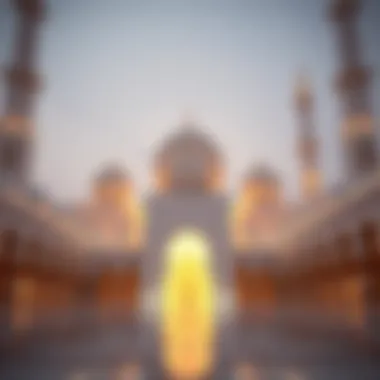

In this way, the mosques of Dubai stand equipped not only as centers of faith but also as integral players in the local economy and collective social identity.
Challenges and Future Prospects
The mosques of Dubai stand as symbols of cultural heritage and architectural beauty, yet they face significant challenges as the city continues to modernize. Understanding these challenges is crucial for appreciating the complexities surrounding these sacred spaces. Their future prospects will depend on how well they can adapt without compromising their fundamental values and aesthetic integrity.
Preservation of Heritage
Preserving the architectural integrity and cultural significance of mosques in an ever-evolving urban landscape is no small feat. It requires the combined efforts of community members, religious authorities, and city planners. This is important not just for the mosques themselves, but for the community that identifies with these structures. The mosques serve as historical markers, and losing them would be akin to erasing parts of the community’s identity.
Efforts for preservation often include stringent regulations regarding renovations, ensuring that any changes maintain the original design elements. For instance, the intricate mosaics and traditional calligraphy found in many of Dubai's mosques must be handled with care, ensuring they retain their authentic feel amidst modernization. Minor restorations can breathe new life into these spaces without overshadowing their historical context, providing a delicate balance between the past and future. Not only does this preservation foster respect for heritage, it also promotes tourism, drawing visitors eager to explore Dubai's rich Islamic architecture.
"To neglect our mosques is to strip away the fabric of our cultural identity."
Integration with Urban Development
As Dubai continues to expand, the integration of mosques within the framework of urban development is an intricate issue. The dynamic nature of the city demands that these religious structures harmonize with modern day architecture while serving the needs of a diverse population. Essentially, it involves creating spaces that are not only functional but also respectful of the spiritual significance they hold.
Strategic planning can lead to community spaces that invite dialogue among residents of all backgrounds, fostering a sense of belonging. Successful integration will also include landscaped areas around mosques, providing much-needed green spaces amidst the concrete jungle.
- Key Considerations for Integration:
- Maintain the aesthetic beauty of the mosque while accommodating modern architectural practices.
- Ensure accessibility for all community members, including expatriates and tourists.
- Make provisions for community activities, such as educational programs, lectures, and interfaith dialogues.
In summary, the challenges of preserving heritage and integrating with urban development are reshaping the future landscape of mosques in Dubai. Addressing these matters thoughtfully will ensure that these architectural marvels continue to thrive as central pillars of the community and cultural identity.
The Intersection of Real Estate and Religious Architecture
The relationship between real estate and religious architecture in Dubai is worth exploring; it's a dynamic interplay that reflects not just the aesthetics of the landscape but also the socio-economic fabric of the city. In a place where skyscrapers touch the clouds, the mosques stand as both beautiful landmarks and vital community pillars. This synergy blooms into a transformative journey for investors, homeowners, and the broader community. By understanding how these mosques influence property values and contribute to community cohesion, stakeholders can make informed decisions that resonate with the cultural heartbeat of Dubai.
Influence on Property Values
Mosques play a significant role in shaping property values in their vicinity. The presence of a mosque can elevate the desirability of a neighborhood, as many residents prize proximity to places of worship due to their cultural and spiritual importance. This is particularly true in a diverse city like Dubai, where expats often seek a sense of belonging. The following aspects illustrate the connection between mosques and property values:
- Enhanced Appeal: Properties located near well-maintained mosques tend to attract buyers who desire easy access to prayer services and community events, thus, heightening their marketability.
- Cultural Significance: For many, mosques are not merely places for worship, but cultural hubs that embody shared values. Neighborhoods with a rich tapestry of cultural offerings often have higher property appreciation rates.
- Community Engagement: The role of mosques in fostering community connections can lead to increased demand for homes in their proximity, as families often prefer environments where they can participate in local activities.
These elements collectively influence the price dynamics within Dubai's real estate market, making it essential for potential buyers and investors to consider the mosque’s role when evaluating property locations.
Creating Community Spaces
Mosques in Dubai serve not only as spiritual sanctuaries but also as social touchpoints for various community activities, thus creating vibrant public spaces. The cultural significance attached to these mosques extends beyond their architectural grandeur, fostering an environment that encourages community interaction. Here are several compelling aspects:
- Multi-Use Facilities: Many mosques in Dubai have adapted to serve multiple functions, acting as venues for educational programs, charity drives, and cultural events, further enriching community ties.
- Social Gatherings: Regular events held at mosques offer a chance for residents to connect, share experiences, and build relationships that integrate diverse segments of the population.
- Inclusive Atmosphere: By providing welcoming spaces for all, mosques cater to various community members, encouraging understanding and respect among individuals from different backgrounds.
In a broader view, such initiatives enhance the overall quality of life in Dubai, with mosques leading the way in bridging gaps between different cultures while fostering communal harmony. This integration not only reflects positively on the community but also resonates through its real estate, as homes near these inviting spaces become increasingly sought after.
The presence of a mosque can lift property appeal significantly, shaping the identity of neighborhoods in Dubai.
Culmination
The journey through the mosques of Dubai sheds light on a fascinating blend of architecture, cultural significance, and community integration. Understanding the role of these structures goes beyond just admiring their grandeur; it's a deep dive into what they represent in the social fabric of this vibrant city. Mosques are not merely places of worship but are also symbols of unity, heritage, and the rich tapestry of traditions that define Dubai.
Summary of Key Insights
Throughout this article, we explored several noteworthy mosques, each offering a glimpse into the architectural diversity present in Dubai. Key points to consider include:
- Architectural Innovations: Each mosque showcases distinctive elements, from the exquisite patterns at Sheikh Zayed Grand Mosque to the modern sleek lines of Dubai Marina Mosque.
- Community Role: These mosques serve as community hubs, fostering a sense of belonging and engagement among residents and visitors alike.
- Cultural Integration: The mosques embody how traditional Islamic design can coexist with modern urban aesthetics, enriching the cultural landscape.
- Economic Impact: The presence of these iconic structures can influence property values, making them attractive to investors and homebuyers, capable of enhancing a neighborhood's charm.
The significance of mosques stretches far beyond their physical presence; they are open doors into the heart of Dubai’s identity, resonating through history and into the future.
The Ongoing Importance of Mosques in Dubai
As we look to the future, the ongoing relevance of mosques in Dubai will likely continue to evolve. They will serve as:
- Cultural Beacons: Attracting tourists and expatriates who seek immersion into the traditions and values of the local populace.
- Centers for Learning: Many mosques are taking on expanded educational roles, offering programs in various languages to engage diverse audiences.
- Community Builders: As the city expands, mosques will remain crucial in cultivating a sense of community among the populace, bridging gaps between varied cultural backgrounds.
Overall, mosques in Dubai act not just as sites for prayer but as pivotal landmarks that shape the community's identity while balancing the scales of modernity and tradition. To neglect their ongoing importance would be to overlook an essential thread in the city's narrative.


